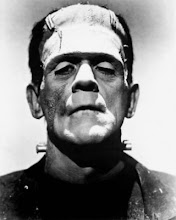During the 17th century the status of merchants improved. People saw that trade was an increasingly important part of the country's wealth so merchants became more respected. However political power and influence was held by rich landowners.
At the top of society were the nobility. Below them were the gentry. Gentlemen were not quite rich but they were certainly well off. Below them were yeomen, farmers who owned their own land. Yeomen were comfortably off but they often worked alongside their men. Gentlemen did not do manual work! Below them came the mass of the population, craftsmen, tenant farmers and labourers.
At the end of the 17th century a writer estimated that half the population could afford to eat meat every day. In other words about 50% of the people were wealthy of at least reasonably well off. Below them about 30% of the population could afford to eat meat between 2 and 6 times a week. They were 'poor'. The bottom 20% could only eat meat once a week. They were very poor. At least part of the time they had to rely on poor relief.
By an act of 1601 overseers of the poor were appointed by each parish. They had power to force people to pay a local tax to help the poor. Those who could not work such as the old and the disabled would be provided for. The overseers were meant to provide work for the able-bodied poor. Anyone who refused to work was whipped and, after 1610, they could be placed in a house of correction. Pauper's children were sent to local employers to be apprentices.
At the top of society were the nobility. Below them were the gentry. Gentlemen were not quite rich but they were certainly well off. Below them were yeomen, farmers who owned their own land. Yeomen were comfortably off but they often worked alongside their men. Gentlemen did not do manual work! Below them came the mass of the population, craftsmen, tenant farmers and labourers.
At the end of the 17th century a writer estimated that half the population could afford to eat meat every day. In other words about 50% of the people were wealthy of at least reasonably well off. Below them about 30% of the population could afford to eat meat between 2 and 6 times a week. They were 'poor'. The bottom 20% could only eat meat once a week. They were very poor. At least part of the time they had to rely on poor relief.
By an act of 1601 overseers of the poor were appointed by each parish. They had power to force people to pay a local tax to help the poor. Those who could not work such as the old and the disabled would be provided for. The overseers were meant to provide work for the able-bodied poor. Anyone who refused to work was whipped and, after 1610, they could be placed in a house of correction. Pauper's children were sent to local employers to be apprentices.
Zehra
http://www.localhistories.org/stuart.html

No comments:
Post a Comment